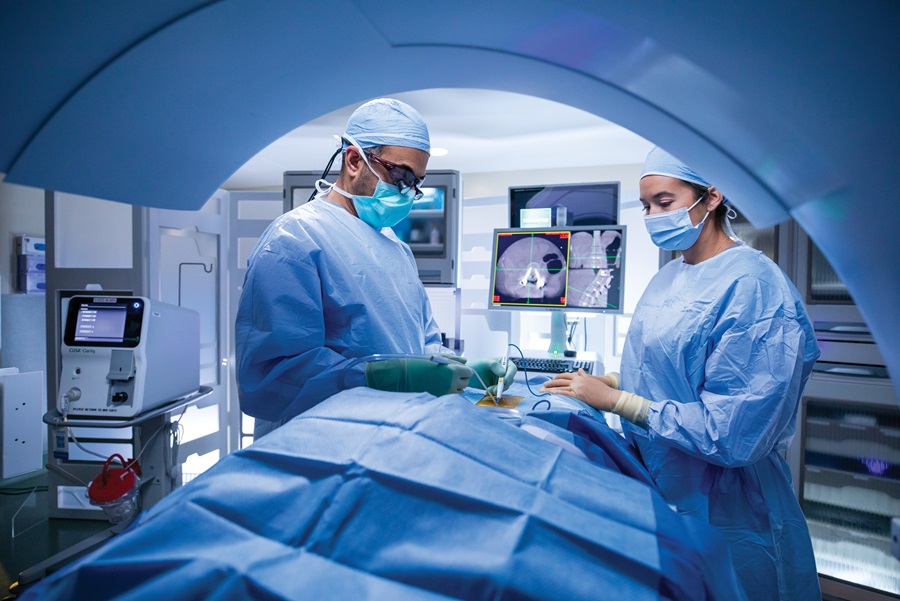How Insurance coverage Works with the Best Spine Surgeons in St Louis MO
How Insurance coverage Works with the Best Spine Surgeons in St Louis MO
Blog Article
An Introduction of Spinal Column Problems That Typically Lead To Surgical Therapies
Back conditions such as herniated discs, spinal constriction, and degenerative disc illness frequently demand surgical interventions when traditional treatments fail to minimize consistent symptoms. Recognizing the subtleties of each condition and the equivalent surgical alternatives, such as discectomy or spine fusion, is critical for efficient management.
Herniated Discs
Although lots of individuals with herniated discs might find alleviation through traditional treatments, surgical procedure ends up being a necessary factor to consider when symptoms linger or intensify - best spine surgeons in st louis mo. A herniated disc takes place when the soft internal gel of a back disc extends via its outer layer, potentially compressing close-by nerves and leading to discomfort, numbness, or weak point in the extremities
Conservative administration typically consists of physical treatment, pain medicines, and corticosteroid shots, which aim to minimize inflammation and boost function. In instances where these methods stop working to relieve debilitating signs, surgical choices might be discovered.
The most common procedure for herniated discs is a discectomy, which includes the elimination of the herniated section of the disc to soothe pressure on the affected nerve root. In much more serious situations, spine blend might be essential to stabilize the affected vertebrae.
Patients are recommended to talk about the prospective dangers and benefits of surgical treatment with their health care supplier to make an educated choice. Inevitably, the objective of any type of surgical intervention is to restore function, alleviate pain, and boost total top quality of life for individuals experiencing from herniated discs.
Spinal Stenosis
Back constriction takes place when the areas within the back narrow, causing enhanced stress on the spine and nerves. This condition can establish in various regions of the back, consisting of the lumbar and cervical areas, often due to age-related adjustments, such as degenerative disc illness, arthritis, or thickening of tendons.
Individuals with spine stenosis might provide with symptoms that consist of pain, pins and needles, prickling, or weak point, mainly in the legs or arms. These signs and symptoms can be worsened by activities that include standing or walking, usually leading people to seek alleviation with conservative therapies like physical therapy, drugs, or epidural steroid injections.
However, when these non-surgical treatments fail to give appropriate relief, medical options might be considered. Usual surgical treatments for spinal constriction include laminectomy, which includes the removal of part of the vertebra to alleviate pressure, and back combination, which maintains the affected location. The decision to go after surgical procedure is usually based upon the seriousness of symptoms, the level of useful impairment, and the general health of the client. Motivate diagnosis and administration are crucial to stop further neurological compromise and enhance lifestyle.
Spondylolisthesis
Spondylolisthesis takes place when one vertebra slips forward over one more, resulting in imbalance of the back. This problem can arise from numerous factors, including congenital problems, trauma, or degenerative modifications in the spinal column. It is most frequently observed in the back area, especially at the L4-L5 and L5-S1 degrees.

When non-surgical approaches stop working to soothe signs or when substantial nerve compression is present, surgical treatment might be required. Surgical choices can consist of spinal combination or decompression treatments, intended at restoring positioning and relieving neurological symptoms.
Degenerative Disc Illness

The condition can be detected via a mix of medical assessment, imaging studies, and person background. When these techniques fail to provide ample alleviation, surgical interventions may be taken into consideration.
Surgical options for DDD might consist of back blend or man-made disc substitute, targeted at supporting the influenced section and alleviating discomfort (best spine surgeons in st louis mo). Ultimately, the selection of treatment is embellished, thinking about the intensity of the problem, client wellness, and way of life variables
Spinal Growths

What variables contribute to the development of growths within the spinal column, and just how do they show up in patients? Spinal growths can develop from numerous variables, including genetic predisposition, environmental influences, and pre-existing medical conditions. They can be classified as key lumps, coming from the spine, or additional growths, which spread out from other regions of the body. why not try these out Individuals might offer with a series of symptoms, including local discomfort, neurological deficits, weak point, or adjustments in bowel and bladder function, relying on the tumor's dimension and area.
Diagnosis commonly entails imaging researches such as MRI or CT checks, which assist define the tumor's attributes and effect on surrounding frameworks. In assessing treatment alternatives, the lump's type, location, and quality are crucial considerations. Surgical treatment may be warranted to alleviate signs and symptoms, acquire a biopsy, or remove the lump completely. The goal of surgery is usually to decompress neural components and support the spine. Adjuvant treatments, including radiation or radiation treatment, may likewise be necessary relying on the tumor's nature. Early discovery and intervention are critical for optimizing end results in clients with back tumors.
Final Thought
In recap, spine conditions such as herniated discs, spine constriction, spondylolisthesis, degenerative disc condition, and spinal growths often demand medical treatment as a result of their possible to create considerable pain and functional disability. While conservative treatments might provide momentary relief, surgical options come to be essential when signs and symptoms intensify or persist. Prompt diagnosis and intervention play a critical function in click for info recovering feature and enhancing the lifestyle for affected people, emphasizing the value of extensive spine care.

Report this page